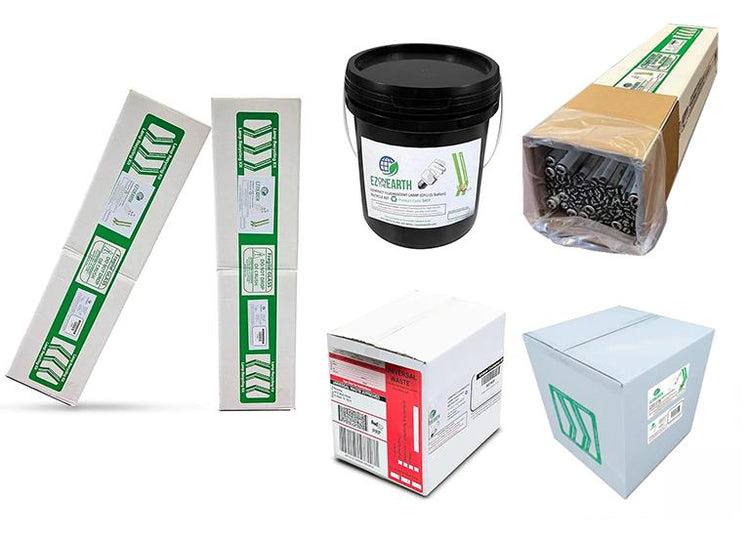
Polychlorinated biphenyls (PCBs) are a group of synthetic organic chemicals that were widely used in various industrial applications, including electrical equipment, due to their non-flammability, chemical stability, and electrical insulating properties. One common use of PCBs was in ballasts for fluorescent lighting systems. However, due to the environmental and health risks associated with PCBs, their use was banned in the United States in 1979, and strict regulations govern the disposal of any remaining PCB-containing materials. This article delves into the importance of PCB ballast disposal, the risks associated with improper handling, the regulatory framework, and the proper disposal methods.
Understanding PCB Ballasts
PCBs were commonly used in electrical equipment like capacitors and transformers, and ballasts in fluorescent light fixtures. A ballast regulates the current to the lamps and provides the necessary voltage to start the lamp. While many older ballasts were manufactured without PCBs, those produced before the 1980s likely contain these hazardous materials.
The Risks Associated with PCBs
PCBs pose significant environmental and health risks. They are known to be persistent organic pollutants (POPs), meaning they do not easily break down in the environment and can accumulate in the food chain. The following are key risks associated with PCBs:
- Health Risks: Exposure to PCBs has been linked to various health issues, including:
- Cancer: Studies suggest that PCBs may increase the risk of certain types of cancer, including breast cancer and liver cancer.
- Endocrine Disruption: PCBs can interfere with hormone systems, potentially leading to reproductive health problems and developmental issues.
- Immune System Effects: PCB exposure may impair the immune system, making individuals more susceptible to infections and diseases.
- Neurological Effects: Some studies indicate that PCB exposure may affect cognitive and motor functions, especially in children.
- Environmental Contamination: Improper disposal of PCB-containing materials can lead to soil and water contamination. PCBs can leach into groundwater or be carried by stormwater runoff, posing risks to ecosystems and drinking water sources.
Regulatory Framework for PCB Ballast Disposal
Given the hazards associated with PCBs, regulatory agencies, particularly the U.S. Environmental Protection Agency (EPA), have established stringent regulations for the disposal of PCB-containing materials. Key regulations include:
- Toxic Substances Control Act (TSCA): Enacted in 1976, TSCA governs the use and disposal of PCBs in the United States. Under TSCA, PCBs are classified based on their concentration:
- High-Concentration PCBs: Greater than 50 parts per million (ppm) and are subject to strict disposal regulations.
- Low-Concentration PCBs: Between 1 and 50 ppm, which can be disposed of in specific landfills designed to handle PCB waste.
- EPA Guidelines: The EPA provides guidelines for the proper handling, storage, and disposal of PCB-containing materials. Key recommendations include:
- Labeling: Any ballast containing PCBs must be clearly labeled to indicate its PCB content.
- Storage: PCBs must be stored in leak-proof containers, away from potential contaminants.
- Disposal: PCBs must be disposed of at permitted hazardous waste facilities that comply with federal and state regulations.
The Process of PCB Ballast Disposal
Proper disposal of PCB ballasts involves several key steps to ensure safety and compliance with regulations:
- Identification: Before disposal, it is crucial to determine whether the ballast contains PCBs. This can often be done by checking the labeling on the ballast. If there is uncertainty, testing may be necessary.
- Safety Precautions: Individuals handling PCB ballasts should take safety precautions, including wearing gloves and protective clothing. Proper ventilation should be ensured during any work involving PCB materials.
- Removal: If PCB ballasts are identified, they should be carefully removed from fixtures. It is essential to minimize damage to the ballast to prevent spills or leaks.
- Storage: Once removed, PCB ballasts should be placed in sturdy, leak-proof containers. These containers should be labeled clearly to indicate that they contain PCBs. Storage areas should be secure and designed to prevent spills.
- Transport: PCB ballasts must be transported in compliance with local, state, and federal regulations. This may involve using licensed hazardous waste transporters to ensure safe handling.
- Disposal: The final step involves sending the PCB ballasts to a permitted hazardous waste disposal facility. These facilities are equipped to handle PCB waste safely and ensure that it is disposed of in compliance with regulations.
Alternative Options for PCB Ballast Management
In addition to proper disposal, there are alternative options for managing PCB ballasts:
- Recycling: Some facilities specialize in recycling PCB-containing materials. This can help recover valuable components and reduce environmental impacts. However, the recycling of PCB ballasts is subject to strict regulations and should only be performed by certified facilities.
- Replacement: When possible, replacing PCB ballasts with modern, PCB-free alternatives is a proactive approach to reducing PCB waste. Newer ballasts are designed to be more energy-efficient and environmentally friendly.
- Awareness and Training: Educating individuals involved in maintenance, renovation, or construction about the hazards of PCBs and proper disposal methods is critical. Training programs can help ensure compliance with regulations and promote safe handling practices.
Conclusion: The Path to Responsible PCB Ballast Disposal
PCB ballast disposal is a critical issue that demands attention from individuals, businesses, and regulatory agencies alike. The health risks associated with PCB exposure, coupled with the potential for environmental contamination, underscore the importance of proper disposal practices. By understanding the regulatory framework, following established disposal procedures, and promoting awareness, we can minimize the risks associated with PCBs and contribute to a cleaner, safer environment.
As society moves toward more sustainable practices, it is essential to recognize the legacy of PCBs and the need for responsible management of existing materials. Proper PCB ballast disposal is not just a regulatory obligation; it is a commitment to safeguarding public health and protecting our planet for future generations.